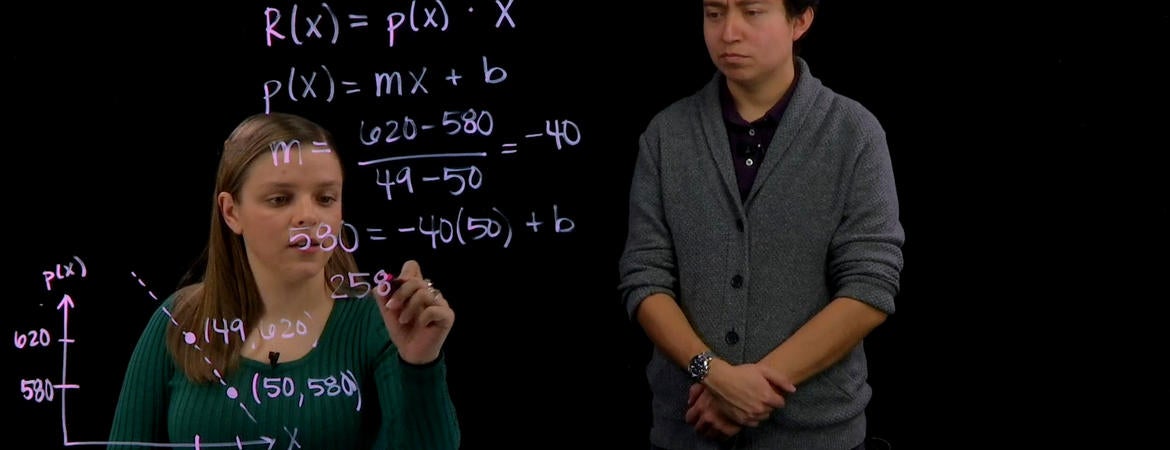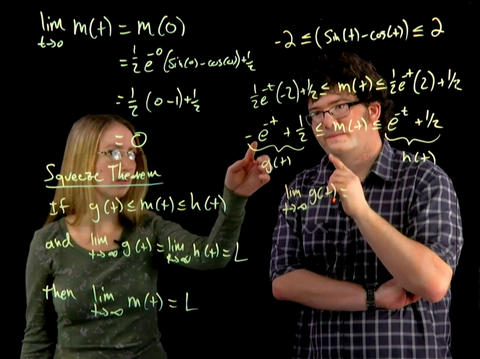
UC Riverside is leading a new, $1.26 million project to bring calculus classes to life for students who are underrepresented in science, technology, engineering, and math subjects.
“Calculus has been taught in the same linear fashion for over a century,” said curriculum developer and UCR associate math professor David Weisbart. “It hasn’t really been re-imagined until now.”
Introductory calculus classes are traditionally taught as an abstract set of rules and formulas. This course will use new technology and learning strategies featuring real-life scenarios to help students see how they can apply what they learn.
“We want to bridge students’ intuitive thought process and precise mathematical calculations,” Weisbart said. “I want them to know that symbols on paper have meaning and relate to what we see in the world, and to view manipulating symbols as a proxy for performing physical experiments.”
During his own days as a student, Weisbart struggled until he found a way to view mathematical ideas as part of his creative self-expression. “As an instructor, I have found that I am not alone in this need. That is why our program will be tailored to students’ individual interests,” he said.
Students will be able to choose from a variety of homework sets and worksheets based on their interests. It will also feature learning technology that adapts as students master the concepts.
Part of the innovation is Weisbart’s partnership with assistant UCR education professor Kinnari Atit in developing a spatial reasoning aspect to the curriculum. Spatial reasoning is the ability to perceive spatial information such as the measurements, shapes, position, and motion of things. For example, navigating your way through a dense forest requires spatial perception and awareness.
An electronic textbook to accompany the course will be free and accessible to the public. This removes a significant barrier to participation for lower-income students, since freshman textbooks can run several hundred dollars.
Short video tutorials will be a key feature of the e-book, featuring a diverse cast of actors solving practical problems. For example, the actors could be an employee and a supervisor in a commercial laboratory where students might one day hope to work. The book will also be written with English language learners in mind. The book is being created with the support of UCR XCITE’s instructional design team.
California community college partners on this project include Saddleback and Yuba colleges. The co-principal project investigators from these schools, Carrillo Bryan and Dylan Noack, both graduated from UCR with Ph.D. degrees in math. Both were also mentored by Weisbart.
“I’m very proud that UC Riverside developed our students into colleagues who have become leaders in the community colleges,” said Yat Sun Poon, project leader and professor in UCR’s Department of Mathematics.
When the curriculum and textbook are completed in 2024, UCR will host workshops for educators interested in learning how to run the program. Co-PI Cathy Lussier, assistant professor of teaching, will lead the trainings. Poon anticipates a great deal of interest from the full spectrum of higher education institutions in California.
California’s Learning Lab, an initiative of the Governor’s Office of Planning and Research in partnership with the Foundation for California Community Colleges, funded the project. “I believe they did so because the state recognizes the importance of a population better able to use calculus,” Poon said.
The subject has particular relevance to the pandemic the world is living through today, Poon explained.
“Blood clotting, the movement of fluids, the spread of airborne disease — all these things are studied with calculus,” Poon said. “Calculus is about understanding and managing how things change over time.”




